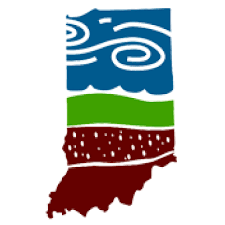
Locally, the Decatur, Franklin and Ripley County SWCDs received $125,750 for “Keep the Lights On Pollinators: Fireflies, Hummingbirds, Butterflies Oh My!”
CWI funds are being used to form a partnership between the Decatur, Franklin and Ripley SWCDs by installing pollinator habitats, replacing invasive shrubs in the community and educating the public on the importance of native pollinator habitats. Through the grant, the districts will provide native pollinator seed to landowners to convert part of their ground to native plant gardens.
In addition, the project will work to replace invasive shrubs on residential property. Homeowners can remove an invasive shrub and replace it with a native pollinator friendly shrub by working with a local nursery. The landowner will be reimbursed for their native shrub by the project. This will help reach small-scale homeowners that might not have the land to install a traditional pollinator habitat.
“Providing farmers and landowners with tools and funding to keep our Indiana waterways clean and their soil structure healthy is key to keeping Indiana agriculture thriving,” said Lt. Gov. Suzanne Crouch, Secretary of Agriculture and Rural Development. “This funding will allow 48 organizations across 26 projects to improve their local water systems, keep their soil healthy and keep their communities thriving. Last year’s increase in Clean Water Indiana funding from the general assembly is already making a lasting impact.”
The Clean Water Indiana program is administered by the state’s soil conservation board. The program, led by the Indiana State Department of Agriculture (ISDA), provides financial assistance to landowners and conservation groups that are working to reduce runoff from non-point sources of water pollution, whether it’s on agricultural land, urban areas or eroding streambanks.
Once received, districts can use the funds to partner with other counties or address specific needs within their jurisdiction. Some examples include participating in a cost share program, hiring staff, providing technical assistance, implementing cover crop incentive programs or increasing watershed capacity.
To see additional details on the grantees and awards, please click here.



